Everything you wanted to know about making maple syrup...
but were afraid to ask. A story, of course, told by a man obsessed.
(NOTE: This is my last story on maple sugaring which kind of explains how it all works. With a little gem of an anecdote in the middle. Enjoy.)
I have a tiny ‘sugaring’ operation: 20-40 taps, depending on my energy level. I do it the old-fashioned way with metal buckets and wood fire under the evaporator pan to boil down the sap into syrup. (Confession: I have a small pan which is tricky and sometimes, upon loss of focus, I do burn a batch, leading everyone in my family to chortle.)
I tap the same trees each year so I know which ones tend to produce the most sap and which ones produce sap with the most sugar content. On a good year (and, honestly, there is never a ‘bad’ year), I produce from 3-7 gallons of syrup; plenty for me, family and a few close friends.
The start
In the fall I collect, cut, split and stack at least half a cord of wood.
Then I enjoy winter.
Near spring, when the sun gets stronger and temperature rises above 40 degrees in the day and goes below freezing at night (25 or so is perfect) I begin to tap the trees.
I drill the holes (3/16” diameter, 11/2 inches deep), tap in the metal, er, tap, hang the bucket on it and slide on the cover. Usually I do the tapping on a warm, sunny day, so the sap is coming out even before I get the tap in. With the empty bucket hung, this is what it sounds like:
A little science (sort of)
Now the science part. In the day, as the sugar maple tree warms, the sap stored in the branches thaws and builds pressure inside the tree which pushes the sap down the tree and out the taps. Scientists aren’t exactly sure why this happens. Nor are they sure why, with below-freezing temperatures, sap runs up the tree through the main veins, back out into the branches, a kind of recharging process. (Isn’t it great when even scientists don’t understand everything?)
The pace of this stream of sap inside the tree varies from tree to tree, depending on whether the tree is large or small or gets a lot of sunlight or is in the shade. That means each tree sounds different when it drips into the bucket. I’ve recorded a lot of the buckets over the years and once, when I also had some chickens which produce their own kind of melody, I combined them with a gentle chorus of voices in the background and sent the recording to my late friend, Reuben Jackson, a jazz scholar, poet and lover of maple syrup (and chickens). It gave him a chuckle.
On a good ‘run’ of sap, I’ll collect once a day and usually the 30 or so trees will yield about 60-80 gallons of sap each run.
I haul the sap from the buckets to my storage (33-gallon garbage cans encased in snow) and start boiling in my wall-less sugarhouse. About the hauling: I use two five-gallon buckets that weigh upwards of 35 pounds each (a gallon of sap weighs 8.34 pounds). In deep snow, I use a jury rig on an old kid’s sled. In no snow, I use a garden cart. In mud, I slop around as best I can. (About the sugarhouse: I don’t like walls; if you’re going to be outside, well, be outside.)
It takes 38-40 gallons of sap (depending on the sugar content) to make a gallon of syrup, which takes me about four hours to do. That’s a lot of wood. That’s a lot of standing around watching liquid boil. Which often leads me to watch NCAA basketball or some crime show or bullshit with friends who stop by, all of which leads to a lack of focus, which sometimes leads to, well, calamity. Mercifully not too often.
The boil.
So how do you boil it down? (Carefully.)
The sap drips in from the warming pan in the far channel of my little pan and pushes the syrup — colder to hotter — down the channel, through an opening into the middle and then down the final channel — a kind of backward ‘S’ — another feat of physics. The first sap boils at about 213 degrees (we’re 1,100 feet above sea level, so our boiling temperatures are slightly higher.) It is syrup, usually, when it reaches 219.
But that’s not how you determine whether it’s syrup. You do it by density.
I learned this from a man named Ricky who sold me my first ‘arch’ (fire box) and evaporator pan.
With a small gaggle of old timers in his shop who’d hung around to watch this obvious flatlander (I was wearing a coat and tie for a meeting I had to get to) purchase equipment.
“How you gonna tell if it’s syrup?” Ricky asked.
“I guess when it gets to 218-219 degrees,” I said, knowing I was boxed into a corner. I could hear the tut-tuts and smiles from the old-timers.
“You need a densometer,” Ricky said. Which brought some wonderful chuckles from the old-timers.
“Oh, Ricky, Ricky. Hydrometer. It’s a hydrometer. Jeesh.” Ricky was not amused.
But the dense-hydrometer looks like a giant old-fashioned thermometer with weight in the bulb and markings on the side. You pour some near syrup into a narrow metal container, drop the hydrometer in, and when it floats high enough to hit the line, it’s syrup.
(Speaking of old timers, I wrote about helping out The Russell family in my town who’ve been doing it the old way for seven generations. And proving that most things about making maple syrup are funny: Dave and the Bad Beer.)
I tend to draw off the near-syrup at about 217 degrees and finish it in the kitchen where I also can double filter it before bottling.
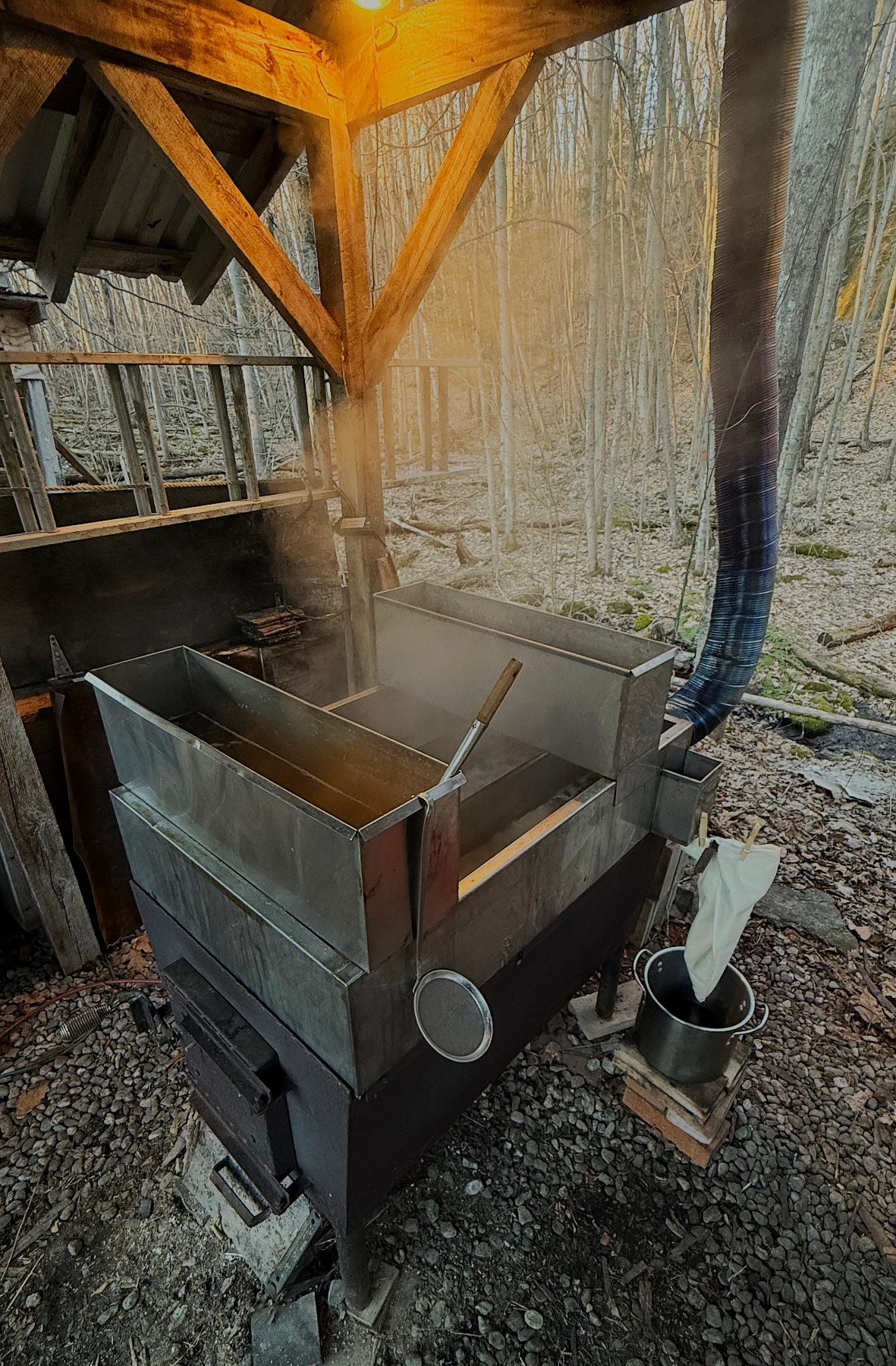
Filtering? Yes indeedy. One of the byproducts of boiling sap is niter, a kind of mineral that makes the syrup taste like it went through one of your kid’s soccer socks. I filter it out — and any other little goodies that have gotten in the sap (did I mention leaves, lichen, ants, moths? no? probably shouldn’t) — with double filters of wool and cotton. I do it when I draw it, like above, and twice more when I finish it off. Works like a charm. Tastes like the nectar of the gods.
Usually you tap the trees in late February or early March (last year, astonishingly, on Valentine’s Day) when temperatures are just right for the trees to begin producing sap. Once spring weather rolls in for real (usually late March or early April) and you have a series of warm days (50+) and warm nights (40+), the trees begin to form buds at their tops, the sap tastes foul and you are done.
So what’s the deal with the ‘grades’ of syrup? What used to be called Grade A Fancy (now called Golden and referred to in Vermont as “Tourist Grade”) is usually the early run when the sap has a higher content of simple sugar that ‘burns’ at a higher temperature. The syrup, therefore, is lighter. As the season progresses, the sugar in the sap breaks down — usually from microorganisms and the warmth — into more complex sugars that ‘burn’ at a lower temperature so it comes out darker.
Since none of us can remember what the new grading system is (10 years old but we’re slow learners) I think of the grades as Amber, Dark and Very Dark. We prefer the darker syrup because, well, it has more flavor. The tourists can have their Golden with its ‘delicate sensation on the palate.'
Once the season is over, I remove the taps, collect and wash the buckets and covers, wash and rinse the filters and clean the evaporator pan with vinegar. I dry everything in the sun. Then I put them all away.
And wait for fall.
So next time you buy some maple syrup and howl at its cost ($25 a quart) consider all that goes into it.
(Not that my relatives care. They’re just glad to get some sweet-tasting free syrup.)


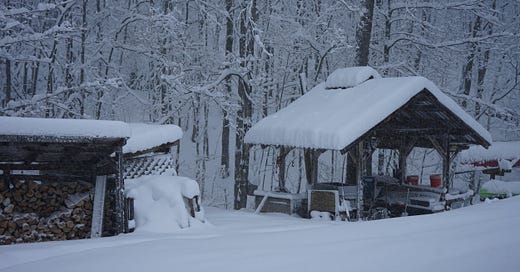



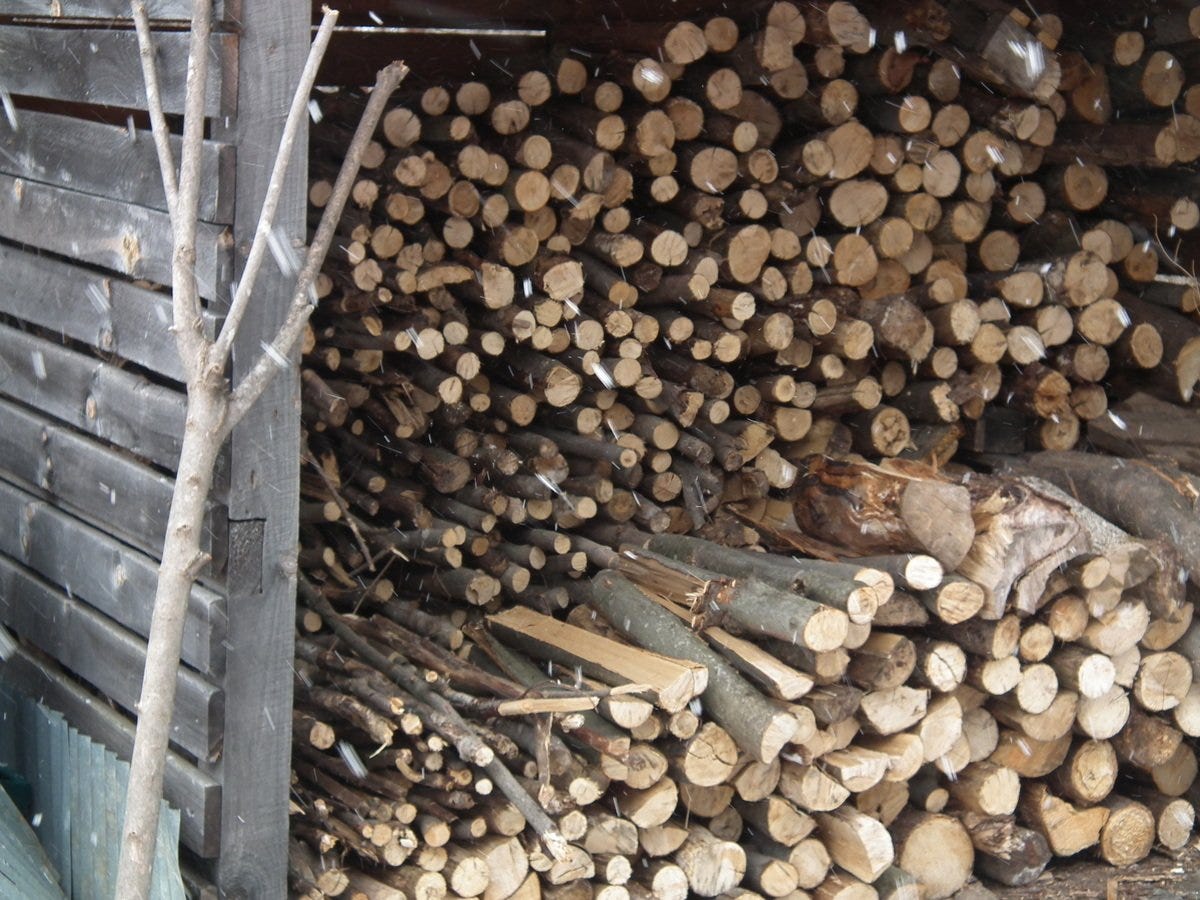
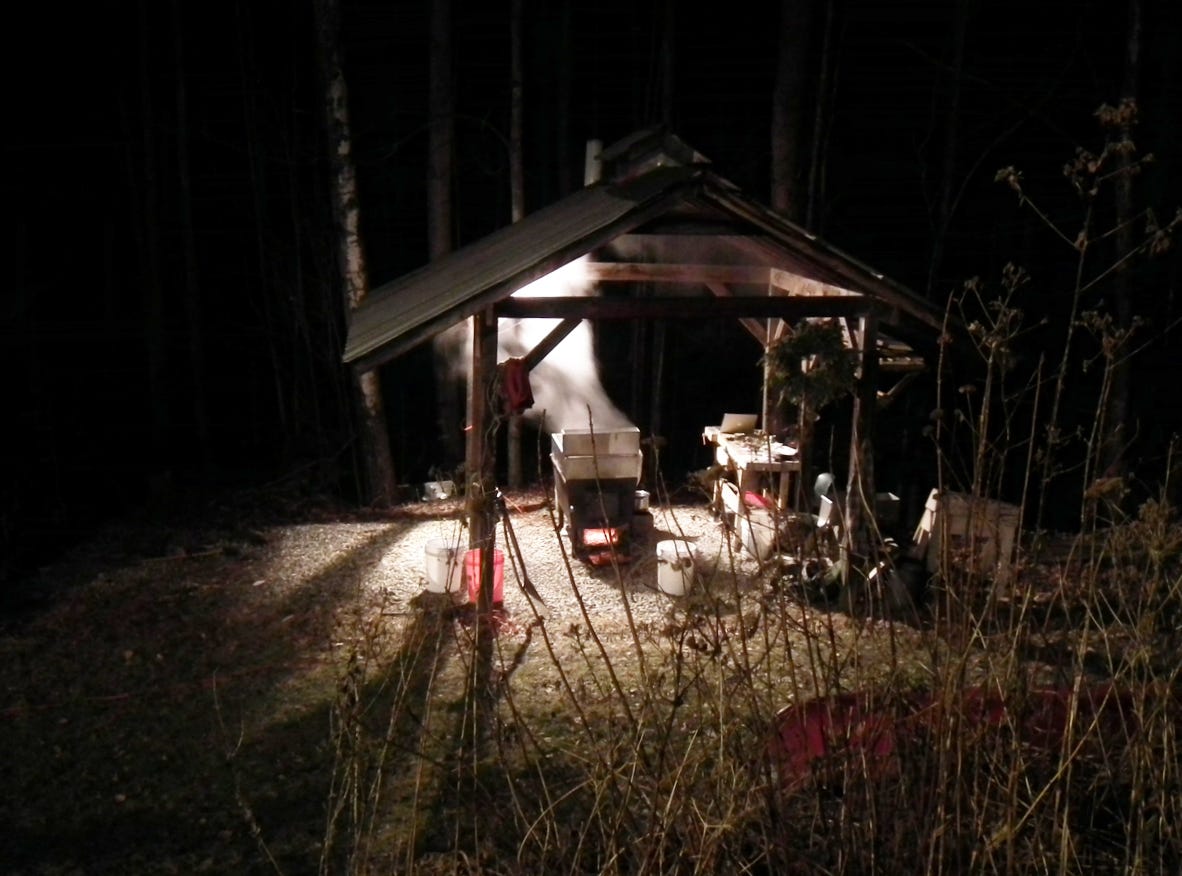
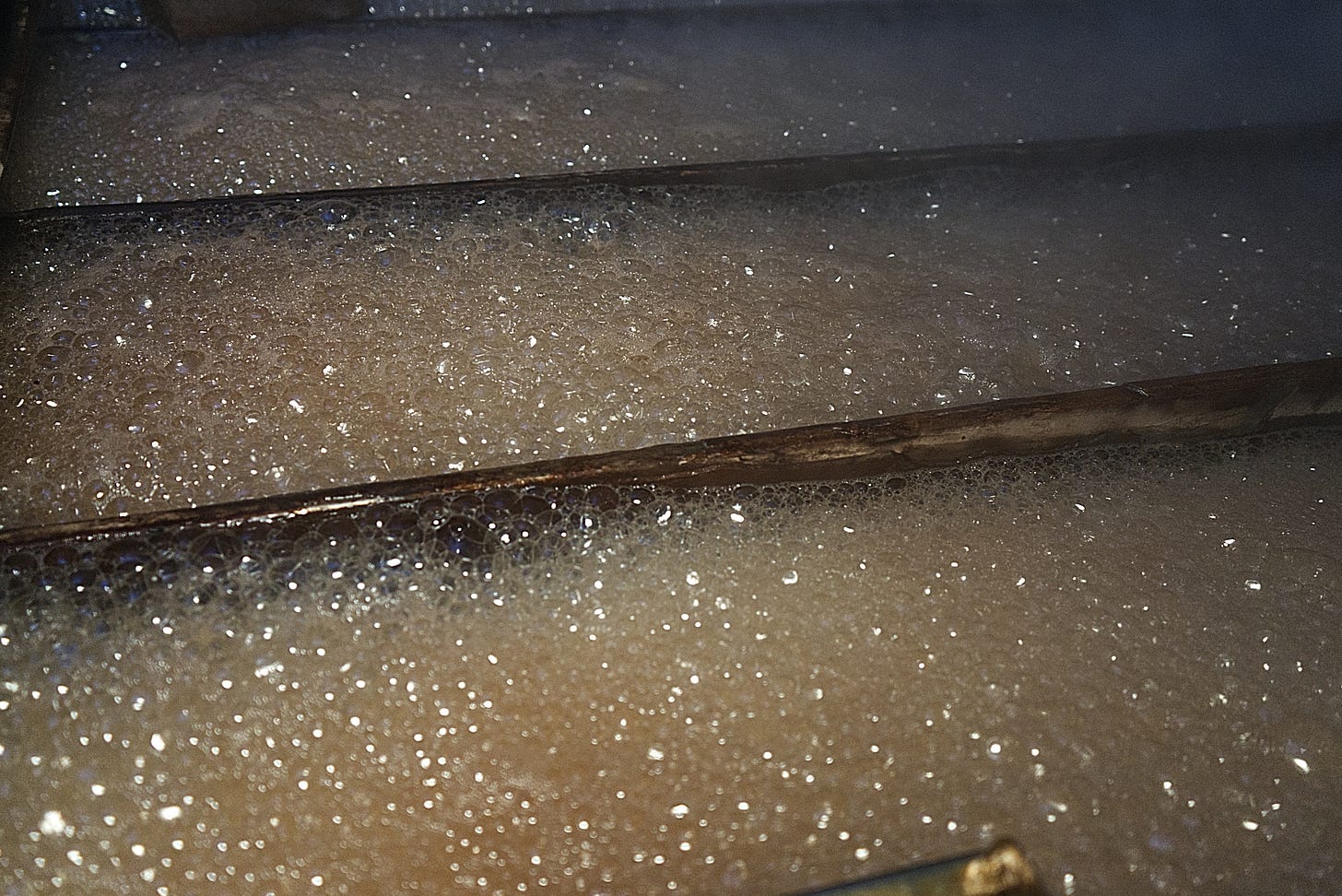
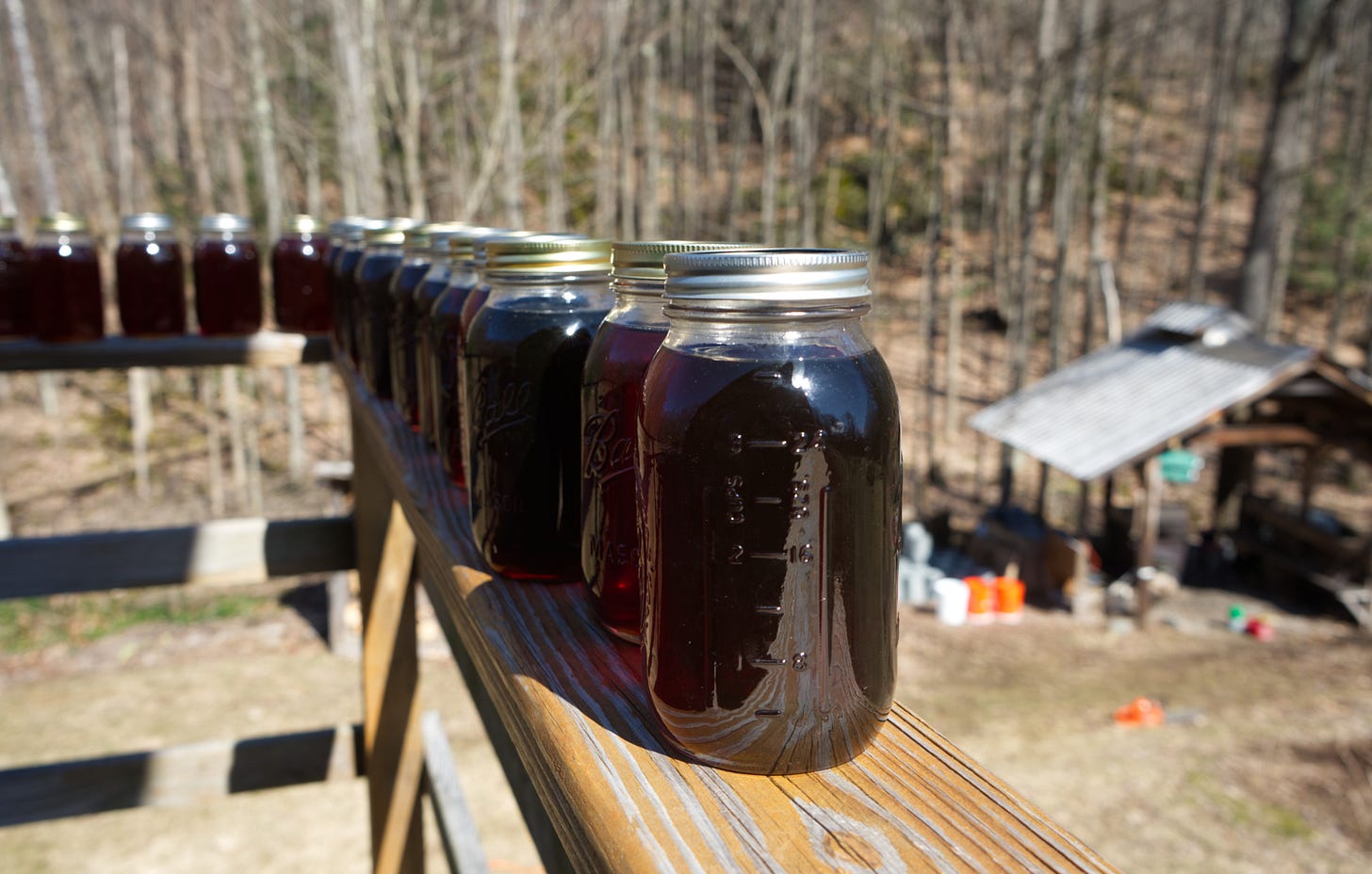
Absolutely fascinating! I've run birch sap but haven't ever paid attention to different sounds. Next time, I'm going to listen.
I watched your video footage for making maple syrup and wanted more - this is the more that I wanted. So interesting. Thanks so much for this.